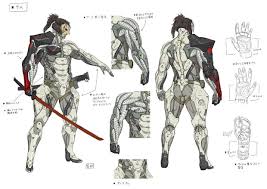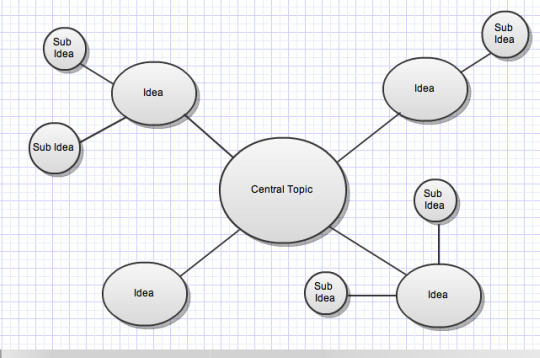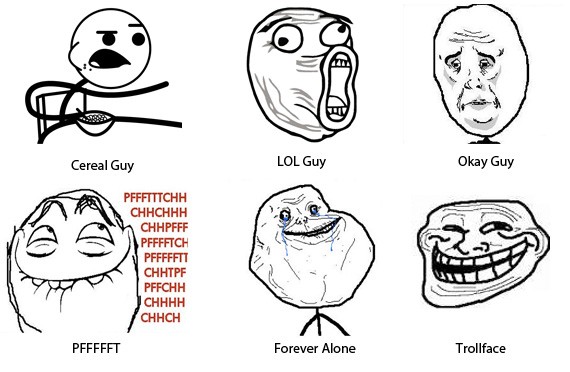Planning and concepting, something that can be a burden to people or an enjoyable process approach. Whether you love or hate it, I believe it is necessary to do.

Firstly I thought to take time to refresh myself on 'what is planning' and what is the deeper meaning of it because what I 'think' I know of it, isn't that fantastic or do I believe what I 'think' I know of it is correct?
Famous quote "
Knowledge is learning something every day, Wisdom is letting go of something every day - Zen Proverb"
So that is something I am just going to do. So planning, also can be described as 'forethoughts', that is a process of thinking about and organizing the activities required to achieve a desire goal. It involves the creation and maintenance of a list of actions that you need to work through to achieve the desire result. This thought process is essential to the creation and refinement of a plan or integration of it with other plans; that is, it combines forecasting of developments with the preparation of scenarios of how to react to them.
Well in any organization, planning is a management process, concerned with defining goals for company's future direction and determining on the mission and resources to achieve those targets. So this goes for game industries and the pipeline work, planning always has purpose and the purpose maybe to achieve a certain goal or targets.
So when people think planning a waste of time or don't see a benefit in planning here is a small list on the positive benefits of planning, so it's rewarding growth at the end of the day, which we all want huh?
- Planning increases the efficiency of an organization.
- It reduces the risk involved in modern business activities.
- It facilitates proper coordination within an organization
- It aids in organizing all available resources.
- It gives right direction to the organization.
- It is important to maintain a good control.
- It helps to achieve objects of the organization
- It motivates the personnel of an organizational
- It encourages manager creativity and innovation
- It helps you to decision making (businessball.com)
Okay this list is mainly aimed at if you are in an organization, business, job. Though isn't that where we are all aiming towards? Besides all of this effects yourself progressively within, and the external effects are some of the bullet points on the list above.


Well concept is a form of illustration where the main goal is to convey a visual representation of a design, idea, and /or mood for use in films, video games, animation or comic books, before it is put into the final product. Concept Art is also referred to as a visual development and / or concept design. This term can also be applied to retail design, set design, fashion design and architectural design.
A concept artist is an individual who generates a visual design for an item, character, or an area that does not yet exist. This also includes and connects towards film, production, animation, and more recently video games production. A concept artist may be required for nothing more than a preliminary artwork or maybe required to be part of a creative team until a project reaches fruition. While it is important for a concept artist, to have necessary skills of a fine artist, a concept artist must also be able to work to strict deadlines in the capacity of a graphic designer. Some concept artists may start as fine artists, industrial designers, animators or even special effects artists. Interpretation of ideas and how they are realized is where the concept artist individual creativity is most evident, as a subject matter is often beyond their control.
Well the materials of a concept artist in recent years have embraced the use of digital technology. Software, such as Photoshop and Corel Painter and hardware such as graphic tablets, enabling more efficient working methods. Though prior to this ( and still to this day ) any number of traditional mediums such as oil paints, acrylics, markers, pencils etc. are used. Owing to this and many modern paints packages are programmed to simulate the blending of colour the same way paint would blend on a canvas; proficiency with traditional media is often paramount to a concept artist's ability to use painting software.
 |
I found this and thought this
be quite a successful, concept planning |
So by just researching briefly on 'Planning and Concepting' getting to understand information on the subjects, clarifies your purpose and path. Tackling planning can vary in the different subjects in areas of academic plane or in this case a very visual subject, many things are transferable and still apply which makes it good for an artist's flexibility.
You always ask yourself, I have got tons of these really cool ideas but I don't know how to get them out, which can be for numerous reasons, like lack of skill, practice, fundamentals, artist block or have not much of an idea how to tackled and approach planning.
As we all strive for individuality and planning can be flexible for the artist, there are specific actions and planning processes for getting your ideas into action. For example the basics like diagrams, bullet points, sentence or phrase, mood-boards, photographs, studying from reference or life and more. It depends on the individual and what they are planning for, for it to recquire a lot of planning or just a general brainstorm.
However, before those actions of some of the examples above, there are some set ground rules. There are many version of people's take of design process, like at Game Art Design, Chris our lecture uses the
design,
analyse and
test, I believe it is and it is shown in a triangle (not only symbolising a strong shape) but it's a way of filtering your 'sketch or drawing, product' through a process machine and if it does reach the requirements asked, then it must be successful.

When I approach planning, I tend to start with a spider diagram, bullet points, references, mood-boards, photographs, sketches and more, this can be generated at different levels of a lot work or just a few pages will be enough.
I find it a struggle to finalize my idea since, I want to try and explore everything I thought of, if you know what I mean? So I end up probably overloading myself with thoughts and ideas and not just letting go and just accept what is efficient and move on. Because all that effort, the previous writing, drawing, ideas are still there for you and might be more valid next time. The main thing you could say is, it's out of your mind-thoughts and projected into this realm onto the physical form our brain decodes, on paper or screen and you process it into this reality, so you could say it will remain and exist here now.

Knowing the fundamentals of process is like knowing the coordinates to your destination, otherwise you'll be lost for a good while of not knowing where you truly need to go or it will be a lot of 'guess-work' which isn't typically bad, but guess work without blue-prints of building a unit for example, knowing where and what needs to fit, can just be a lot more of a back-ache. Wouldn't it be more efficient and smart to have some sort of structure and plan to support you on your journey, then the guess-work or (working out) is backed up and supported stronger, then creativity and intuition can take over, thus your confidence and knowing in your work process and flow.
When I read the whole blog post of "
Art process Boot Camp. Bring a Helmet" I found it an enjoyable read, it felt like her personality and life were in those words and not just too formal and robotic. I found my self relating to her, visually connecting her words in a process of understanding and learning. She seems a strong welding character a person who puts in a lot of craftsmanship to get her artistic result. A lot of what she was expressing, I vaguely came across before but it was a good re-cap and clarification.
She seemed very analytical and strict but confident of her goals and abilities. She is aware of what she can create, when, how and what she needs for that creation. She validates this by being very clear on how reference is a very big important factor and I have to agree. Everything really is reference but people make a stigma of 'photocopies reference' as lazy, cheating, or un-creative but professionals understands it's a requirement for accuracy, ideas, understanding and many more. We all have that thought and rush to the status to be idolised and more impressive, creating artwork out of our imagination from scratch.
 |
This picture perfectly symbolises
In a way our pipeline here at Game Art,
with some mix variation of other planning
and concepting.
Pretty bang on, in terms of the process :) |
Yeah some people may have this boosted ability to achieve that but eventually their development won't improve "
because if you always do what you always know, you always get what you always got" but I believe it's good to do both, because for one you have to be mindful, in a way of not just copying-blindly all the time without understanding it and by remembering what you have studied, or drawn by reference and be reflective and then draw it, think of it, visualise it from memory and imagination. I believe you are using a better intelligent thought process and a confident creative one because by the effort and practise you put in, you then begin to assemble shortly the ability to create sketches, basic concepts, scenes, characters etc, without much support of reference, until when you need, because you have developed, over the 'course of your art journey is a perfect memory bank that you are able to access at will, because you have develop this internally, and thus this corresponds with, lighting, anatomy, colour, perspective all those fundamentals that when it goes from skin, to muscle, to bone and then soul deep, you will then master your abilities.
Her project and notes
I made some notes on her process and her notes that by me putting that effort taking notes and reflecting on it, making it more available to study and will learn a great deal from it. Also it is a great basis of what many artists do today and can be a good structure if you are in search of some grounding.
- Coming up with the idea:
- So where do you begin? Starting point? This is your question: Just what do you want to draw?
- Art is about inspiration though it's the perspiration part that which is researching and planning.
- Reference
- She was stuck to find a good reference anyway and she expresses for her to draw something at her best or realistically, one really needs a good reference, which if you can't find something that fits your concept, what do you do? Might be wise to change the concept?
- Planning the composition
- Vertical and Horizontal Elements
- Perspective
- Action scenes and shots
- Rule of Third
- Flow of lines
- Abstracts
- Thumbnails drawings (rule: if it doesn't work at the size of a postage stamp, it won't work at any size)
- Atmosphere
- Focal point, Farther from the focal point, the blurrier the details in an atmosphere
- Constrast, The stronger the contrast the more focus
- Saturation, The stronger the saturation, the more the focus
- Colour
- Relationship and delicate balance of colour
- One has to get the ingredients down before the cooking and taste-testing can begin.
- Using version of black rather than black, example purpledullborwn can be use for black and sometimes the hue it to other colours to match the need of the painting.
- Colour wheel, if the sunlight is warm the shadows will be cool, vice versa.
- Her good tip was white is not flesh tone,so when you going to tone in, the only place you need to use white is the brightest highlight. So by filling in the background in Photoshop with 50% grey. This will allow to start highlighting and shadowing with proper values because be easier to compare it with mid-range values and able to judge what you need to add or subtract.
- Aware of elements
- Be mindful of element materials of your painting that affect and are affected by the environment.
- Clothing, involves studying the construction, but the thickness, weight, construction, values and environmental habits.
- Fabrics, Satin is a lot different than wool, how do I go a bout painting it? By knowing it's properties and then breaking that down into methods and that you can create realistic materials. Example, the rougher the weave the more diffuse the highlight the thinner, the more translucent; the smoother, the shinier, the more reflective and not forgetting weight affects it in wind sunlight will try to bounce through and around it the water will change both of these properties. There are no quick answers to the questions of the materials, but the trick is remember to ask all the questions.
- Snow, little disks and sandy grains of congealed water. water is transparent, save for the dust it might pick up in the air on the way down. So basically to treat this as a bunch of little ice cubes or one vast chandelier. The properties of snow primarily behave not like sand or dirt, but like many little prisms, spreading the sunlight and diffusing it at every angle through and around itself.
- Final Details
- Detailing the image by improving the image such as the enviroment, character, etc. Taking in account of highlights and shadows, gradients, values, toning, atmosphere and as well using layers to achieve this and create other visual effects like blur.
- She also talks a bout communication to the viewer. Because she express that if you do not have this communication in your work, you more than likely, you won't have the viewers attention, either.
Well just some of important information that catched my eye without writing a lot of it out. Her critique was very important as well, expressing measuring yourself effectively against various levels of standards and not using reference for realism will guarantee doubling or tripling the time spent. As well he review of when she had that little split personality review of reflecting her work. It's funny but we can critique it in both ways sometimes like that, a professional formal way or a deep personal way with high and lows of trips of personality attacks but always proud of your achievement, It was very touching.
Not to drag this blog on any longer, I think I have lost myself slightly with my words but hopefully all of this will some one seems legit and makes sense ha :D Though my end words for now is that depends on the individual and the project at hand, what is essential and require to achieve the result. So knowing and understanding how you work and what works when and expanding yourself into different work flow, just builds yourself to be just like "Water" we all know the famous quote from what Bruce Lee says (though I believe it's from a Zen proverb)
"
Be like water making it way through the cracks. Do not be assertive, but adjust to the object, and you shall find a way round or through it. If nothing within, you stays rigid, outwards things will disclose themselves"
"Empty your mind be formless. Shapeless, like water. If you put water into a cup, it becomes the cup. You put water into a bottle and it becomes the bottle. you put it in a teapot it becomes the teapot. Now, water can flow or it can crash. Be water my friend"






















